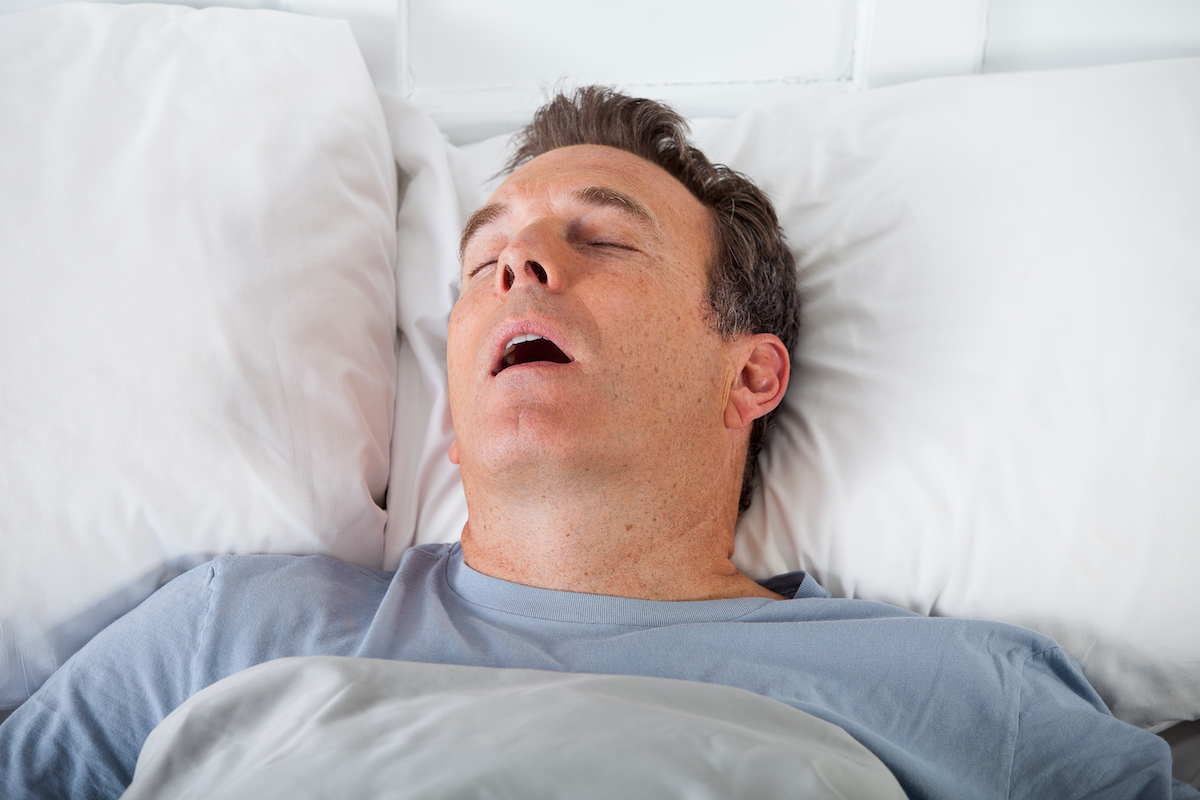
The connection between nocturnal respiration and the depth of restorative sleep is far more convoluted and critically important than the simple dichotomy of snoring versus silent slumber suggests. Rather than a monolithic disorder, what is broadly termed ‘sleep-disordered breathing’ (SDB) encompasses a spectrum of conditions, each disrupting the vital process of oxygenation and sleep continuity through distinct physiological mechanisms. This continuous interruption of the body’s essential repair cycles initiates a cascade of systemic failures, transforming an apparent nighttime nuisance into a chronic, day-and-night health crisis.
This continuous interruption of the body’s essential repair cycles initiates a cascade of systemic failures, transforming an apparent nighttime nuisance into a chronic, day-and-night health crisis.
The most prevalent, Obstructive Sleep Apnea (OSA), is characterized by repetitive upper airway collapse, a physical blockage that momentarily cuts off airflow despite persistent efforts to breathe. When the pharyngeal muscles relax excessively during sleep, the airway narrows or completely closes, precipitating an apnea or hypopnea event. The resultant drop in blood oxygen saturation, a process known as hypoxemia, acts as a physiological alarm bell. The brain, sensing the threat of suffocation, triggers a micro-arousal, a brief awakening that is often so short the individual never consciously registers it. This snort, gasp, or choke re-establishes airway patency, but the cost is a fractured sleep architecture. This pattern can repeat itself dozens, even hundreds, of times per night, fragmenting the normal progression through non-rapid eye movement (NREM) and rapid eye movement (REM) sleep stages, preventing the deep, restorative rest essential for both physical and cognitive health. The disruption of REM sleep, in particular, is noted to be particularly detrimental for emotional regulation and memory consolidation.
The brain, sensing the threat of suffocation, triggers a micro-arousal, a brief awakening that is often so short the individual never consciously registers it.
Contrasting sharply with the mechanical failure of OSA is Central Sleep Apnea (CSA), a less common but equally serious condition where the problem originates in the central nervous system. In CSA, the brain temporarily fails to transmit the necessary signals to the muscles controlling breathing, resulting in a cessation of respiratory effort altogether. The chest and diaphragm muscles remain still, unlike the frantic, albeit ineffective, struggle seen in OSA. This condition is frequently linked to underlying health issues, most notably congestive heart failure, neurological disorders, or the use of certain opioid medications. The diagnostic distinction is crucial because the treatment approach differs fundamentally; a therapy designed to overcome a physical obstruction will be ineffective or even detrimental if the core issue lies in the brain’s respiratory control center. The complexity is further compounded by what is termed ‘Complex Sleep Apnea,’ a hybrid condition presenting features of both central and obstructive apneas, often manifesting or becoming apparent during the initial treatment of OSA.
In CSA, the brain temporarily fails to transmit the necessary signals to the muscles controlling breathing, resulting in a cessation of respiratory effort altogether.
The systemic repercussions of untreated sleep-disordered breathing are severe and extend directly into the cardiovascular and metabolic domains. The cyclic pattern of hypoxemia and hypercapnia—the buildup of carbon dioxide in the blood—forces the body into a repeated stress response. Each apneic event triggers the sympathetic nervous system, causing a surge of stress hormones and a spike in both heart rate and blood pressure. Over years, this relentless nocturnal strain re-models the heart and blood vessels, significantly increasing the risk of hypertension, cardiac arrhythmias, coronary artery disease, and stroke. Men with untreated SDB are statistically shown to be at a substantially higher risk for cerebrovascular events. This continuous, low-grade inflammatory state also disrupts glucose metabolism, creating a strong, independent link between SDB and insulin resistance, often culminating in the development or exacerbation of Type 2 Diabetes, thus establishing a vicious cycle of deteriorating health.
Over years, this relentless nocturnal strain re-models the heart and blood vessels, significantly increasing the risk of hypertension, cardiac arrhythmias, coronary artery disease, and stroke.
Beyond the well-documented physical risks, the most immediate and pervasive consequence of chronic sleep fragmentation is the debilitating effect on daytime cognitive function and emotional equilibrium. The repeated interruptions prevent the brain from clearing metabolic by-products and conducting routine maintenance, leading to an accumulated ‘sleep debt.’ This manifests not as simple tiredness, but as a profound neurocognitive impairment. Individuals often experience unstable attention, slowed reaction times, reduced working memory, and difficulty with executive functions like problem-solving and decision-making. These deficits have tangible, real-world consequences, contributing significantly to workplace errors and, alarmingly, being a major factor in vehicular accidents, where driving impairment can be comparable to alcohol intoxication. The constant struggle to remain vigilant and focused consumes immense mental energy, leading to a state of chronic, low-level irritation and emotional volatility.
The constant struggle to remain vigilant and focused consumes immense mental energy, leading to a state of chronic, low-level irritation and emotional volatility.
The emotional and psychological toll extends further, frequently leading to co-morbid mental health conditions. The ongoing sleep deprivation, coupled with the systemic stress, is strongly associated with heightened levels of anxiety and clinical depression. The disruption to the neurochemical balance, particularly in pathways related to mood regulation, creates a fertile ground for emotional instability. Patients report feeling perpetually irritable, withdrawn, and less motivated, impacting personal relationships and reducing overall quality of life. In some severe cases, the chronic deprivation of restorative sleep has been implicated in transient symptoms that mimic psychosis, involving disorganised thought and altered perceptions. The recognition of this bidirectional relationship—where sleep-breathing issues cause or worsen psychological distress, and vice-versa—is crucial for a genuinely comprehensive patient management plan that moves beyond merely prescribing a mechanical device.
The ongoing sleep deprivation, coupled with the systemic stress, is strongly associated with heightened levels of anxiety and clinical depression.
Diagnostic methodologies, centered around polysomnography (PSG) conducted in a dedicated sleep lab or through validated home sleep apnea testing (HSAT), are essential for accurately classifying the nature and severity of the respiratory disturbance. The gold standard, PSG, meticulously measures airflow, respiratory effort, blood oxygen levels, heart rate, and electroencephalography (EEG) data to chart the disruption of sleep architecture. Identifying the specific type of event—whether a full apnea, a partial hypopnea, or a Respiratory Effort-Related Arousal (RERA)—is critical, as each has a differing threshold for clinical significance and implication for treatment. Arousals, though momentary, are the mechanism by which the physical stress translates into fragmented sleep, and their frequency, even when oxygen levels remain relatively stable, is often the most accurate predictor of severe daytime impairment and cognitive decline.
Arousals, though momentary, are the mechanism by which the physical stress translates into fragmented sleep, and their frequency, even when oxygen levels remain relatively stable, is often the most accurate predictor of severe daytime impairment and cognitive decline.
Treatment for SDB is increasingly being tailored to the specific pathophysiology of the individual patient, moving away from a uniform, one-size-fits-all approach. While Continuous Positive Airway Pressure (CPAP) remains the primary and most effective treatment for moderate-to- severe OSA, its limitations in patient adherence necessitate the exploration of alternative and adjunctive therapies. For patients with milder OSA, oral appliances that reposition the jaw to open the airway offer a viable solution. Central Sleep Apnea often requires more sophisticated devices like Adaptive Servo-Ventilation (ASV), which dynamically adjusts pressure to normalize the patient’s breathing pattern, or may necessitate addressing the underlying condition, such as optimizing heart failure management. Furthermore, novel interventional strategies, including hypoglossal nerve stimulation, are being deployed to address specific anatomical and neurological drivers of the disorder, reflecting a necessary evolution toward precision sleep medicine.
Central Sleep Apnea often requires more sophisticated devices like Adaptive Servo-Ventilation (ASV), which dynamically adjusts pressure to normalize the patient’s breathing pattern.
Addressing these disorders is fundamentally about re-establishing the biological integrity of the sleep state. The goal is not simply to stop the mechanical noise of snoring, but to restore the undisturbed, cyclical progression of sleep stages that permits deep biological and cognitive restoration. Achieving this requires a collaborative, multidisciplinary approach that integrates the expertise of sleep physicians, cardiologists, neurologists, and mental health professionals. By focusing on the underlying respiratory irregularity and its cascading effects on the entire physiological system, clinicians can effectively mitigate the profound, long-term risks associated with a chronic state of oxygen deprivation and sleep deprivation, ultimately returning the individual to a state of sustained alertness and well-being during the waking hours.
The goal is not simply to stop the mechanical noise of snoring, but to restore the undisturbed, cyclical progression of sleep stages that permits deep biological and cognitive restoration.
The silent battle against respiratory interruption during the night is far from a trivial inconvenience; it is a profound assault on systemic health, necessitating immediate and precise therapeutic engagement to prevent a quiet, nocturnal erosion of vitality.
